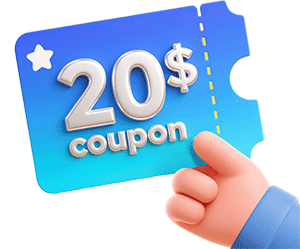What Is Reverse Dropshipping?
Reverse dropshipping is a business model where sellers source high-end or luxury products from developed countries. They then ship these products directly to customers in developing or emerging markets.
Unlike traditional dropshipping, which focuses on low-cost goods shipped from manufacturing hubs to wealthier buyers, reverse dropshipping targets affluent consumers in less saturated markets.
It offers premium international products without holding any inventory.
How Does Reverse Dropshipping Work?
Sourcing Premium Products
In reverse dropshipping, the seller partners with suppliers or brands located in developed countries, such as Europe, the U.S., or Japan.
These suppliers produce high-quality or luxury items. Such products are often difficult to find or expensive in the target emerging markets.
Listing and Marketing
The seller markets these exclusive products on their online store, targeting buyers who desire authentic and prestigious goods but lack easy local access. Clear communication about product origin and authenticity builds trust.
Order Fulfillment and Shipping
Once an order is placed, the seller purchases the item from the supplier and arranges direct shipment to the customer's address abroad. This eliminates the need for warehousing and minimizes upfront investment.
Customer Service and Returns
Managing customer inquiries and handling returns can be more complex due to cross-border logistics, requiring efficient communication and reliable partnerships to maintain customer satisfaction.
Dropshipping vs Reverse Dropshipping: What's the Difference?
Dropshipping: Key Features
- Source Location: Typically from low-cost manufacturing countries like China.
- Target Market: Primarily middle- and high-income customers in developed countries.
- Product Type: Generally affordable, mass-market items.
- Price Point: Lower prices due to direct-from-factory sourcing.
Reverse Dropshipping: Key Features
- Source Location: High-end or luxury product suppliers in developed countries.
- Target Market: Wealthy buyers in emerging or developing markets.
- Product Type: Premium, branded, or exclusive goods.
- Price Point: Higher prices reflecting product quality and brand value.
Pros and Cons of Reverse Dropshipping
Pros
- Access to Exclusive Products: Offers customers rare or luxury items not easily found locally.
- Higher Profit Margins: Premium pricing allows for larger markups.
- No Inventory Costs: Like traditional dropshipping, inventory isn't held upfront.
- Growing Emerging Markets: Taps into rising wealth and demand in developing countries.
Cons
- Complex Logistics: Cross-border shipping can be slower and more expensive.
- Customer Trust Issues: Authenticity and returns may pose challenges for buyers unfamiliar with the brand.
- Higher Initial Marketing Effort: Requires educating customers on product value and origin.
- Supplier Dependence: Relies heavily on suppliers' ability to fulfill orders promptly and reliably.
FAQs
Who is the target audience for reverse dropshipping?
Reverse dropshipping mainly targets customers in developing countries who want access to premium, foreign-made products without the hassle of international shopping or high local prices.
What are the best platforms for reverse dropshipping?
Popular platforms include Shopify for building custom stores, local e-commerce sites, and global marketplaces like Amazon or eBay that support international shipping and luxury product listings.
Is reverse dropshipping harder than traditional dropshipping?
Yes, it can be more challenging due to longer shipping times, customs regulations, and higher product costs. However, it offers unique opportunities with less competition and higher profit margins.
Is reverse dropshipping legal?
Reverse dropshipping is legal as long as sellers comply with import/export laws, pay applicable duties, and follow platform policies. Proper documentation and transparent business practices are essential.


























